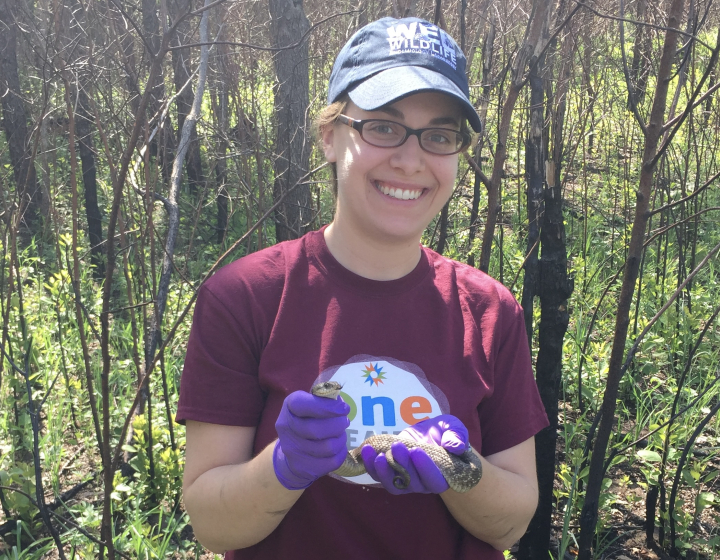New chemotherapy combinations lead to dramatic response
Playful as a puppy even at 730 lbs., Nemo, a rescued black and white Hampshire pig, became a porcine pioneer when lymphoma struck. As the first recipient of several unprecedented treatments and surgical techniques that have already extended his life, Nemo has become a case from which veterinarians can learn, paving the way forward for future large animals to combat cancer.
Expert oncologists at the Cornell University Hospital for Animals (CUHA) are aiding Nemo’s ongoing journey as the first pigs to be treated for lymphoma and to undergo chemotherapy. The prognosis and side effects of chemotherapy in pigs are unknown, but when owners Nancy Krieg and George Goldner saw their friend fall ill, he was determined to help.
“I want to do everything humanly possible for my animals,” said Goldner, who has a former dairy farm turned sanctuary in N.Y.’s Catskill Mountains. “They’re rescues, and we keep them for life. Pigs are very smart. If you’re nice to them they’re very friendly. Nemo’s a real performer; he’s attractive, loves people, and has a great personality.”
The couple worried when 4-year-old Nemo started losing energy and appetite in early 2013. Then one wintry March morning he had a coughing fit and left his heated barn to lie down in the snow. Goldner drove Nemo nearly four hours to Cornell’s hospital, where he was diagnosed with presumptive B-cell lymphoma, a blood cancer.
CUHA clinicians from across fields worked together to prepare for intravenous medication delivery. In the first such procedure ever done to treat a sick pig, surgeon Dr. Jim Flanders, who had performed similar procedures in smaller animals, joined large-animal surgeon Dr. Susan Fubini to surgically implant a vascular access port.
They ran a catheter up a vein in Nemo’s neck to a port behind his ear, creating a route for delivering drugs where they would be most effective while minimizing harm. Balkman and Nemo’s managing veterinarian, resident Dr. Emily Barrell, selected and delivered the chemotherapeutic drugs.
“Although lymphoma has been documented in swine, there aren’t any documented cases of pigs being treated for it,” said CUHA oncologist Dr. Cheryl Balkman. “We adapted a treatment plan based on what we know is effective in dogs, cats, and humans with lymphoma.”
Nemo’s clinical signs soon resolved, and he has continued to do well during long-term treatment. Though little is known about the prognosis for pigs with cancer, Nemo has the notable distinction of establishing a precedent for pigs battling cancer, giving veterinarians valuable information for helping large animals. Since arriving in March, Nemo has resided at CUHA, where Goldner says he’s living it up.
“He has a better life there than almost anyone I know,” said Goldner. “He’s running around digging holes, eating pineapples, communicating vocally, and getting lots of love. CUHA’s people play with him and bring him treats, and he plays funny tricks like tossing water at the residents. The vets have cared for him with amazing dedication and thoughtfulness, especially Dr. Barrell. She’s been exemplary, in every detail, and I don’t use that word often. It’s been a wonderful effort on the part of several people: a testament to the outstanding work done at Cornell.”




